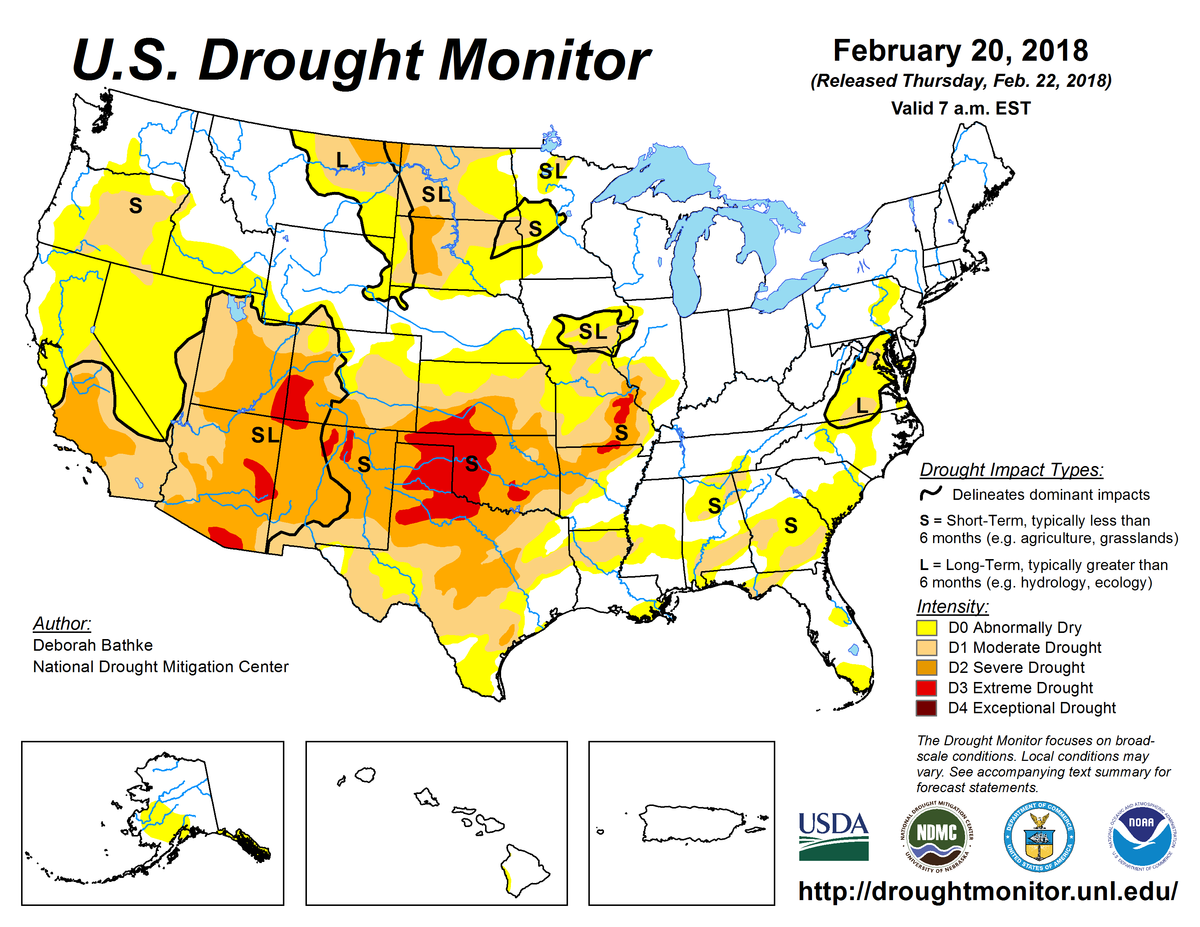
According to the February 20, 2018, U.S. Drought Monitor, moderate to extreme drought covers 36.5% of the contiguous United States, an increase from last week’s 36.3%. Extreme drought also increased from nearly 3.0% last week to 3.2%. But, exceptional drought remained absent from the Nation for a 19th consecutive week.
This U.S. Drought Monitor week began with an upper-level circulation pattern consisting of a generally zonal or westerly flow, with Pacific frontal systems moving across the country from west to east. Some of the fronts moved into the Southwest, bringing much-needed snow and rain, while others moved into the Midwest and South before stalling out along the Gulf of Mexico Coast.
The week ended with an upper-level trough building in the West and a ridge in the East. The trough brought cooler-than-normal weather to the West and northern Plains, and wet weather to parts of the Southwest and much of the Rocky Mountains. The eastern ridge set up a southwesterly flow across the central part of the contiguous United States, which funneled Gulf of Mexico moisture and much warmer-than-normal air into the eastern Lower 48. The Gulf of Mexico moisture fed flooding rains along stalled fronts stretching from eastern Texas to the Great Lakes and Ohio Valley. But, large parts of the Far West and Southeast had a much drier-than-normal week in spite of the fronts.
Above-normal precipitation contracted drought and abnormally dry areas in parts of the southern High Plains, interior Southeast, and Mid-Mississippi Valley. Continued dry weather expanded or intensified drought across parts of the West, central Plains, and Southeast.
Abnormal dryness and drought are currently affecting nearly 131 million people across the United States—about 42.1% of the country’s population.

The full U.S. Drought Monitor weekly update is available from Drought.gov.
In addition to Drought.gov, you can find further information on the current drought as well as on this week’s Drought Monitor update at the National Drought Mitigation Center. See their recent news releases.
The most recent U.S. Drought Outlook is available from NOAA’s Climate Prediction Center and the U.S. Department of Agriculture provides information about the drought’s influence on crops and livestock.
For additional drought information, follow #DroughtMonitor on Facebook and Twitter.



